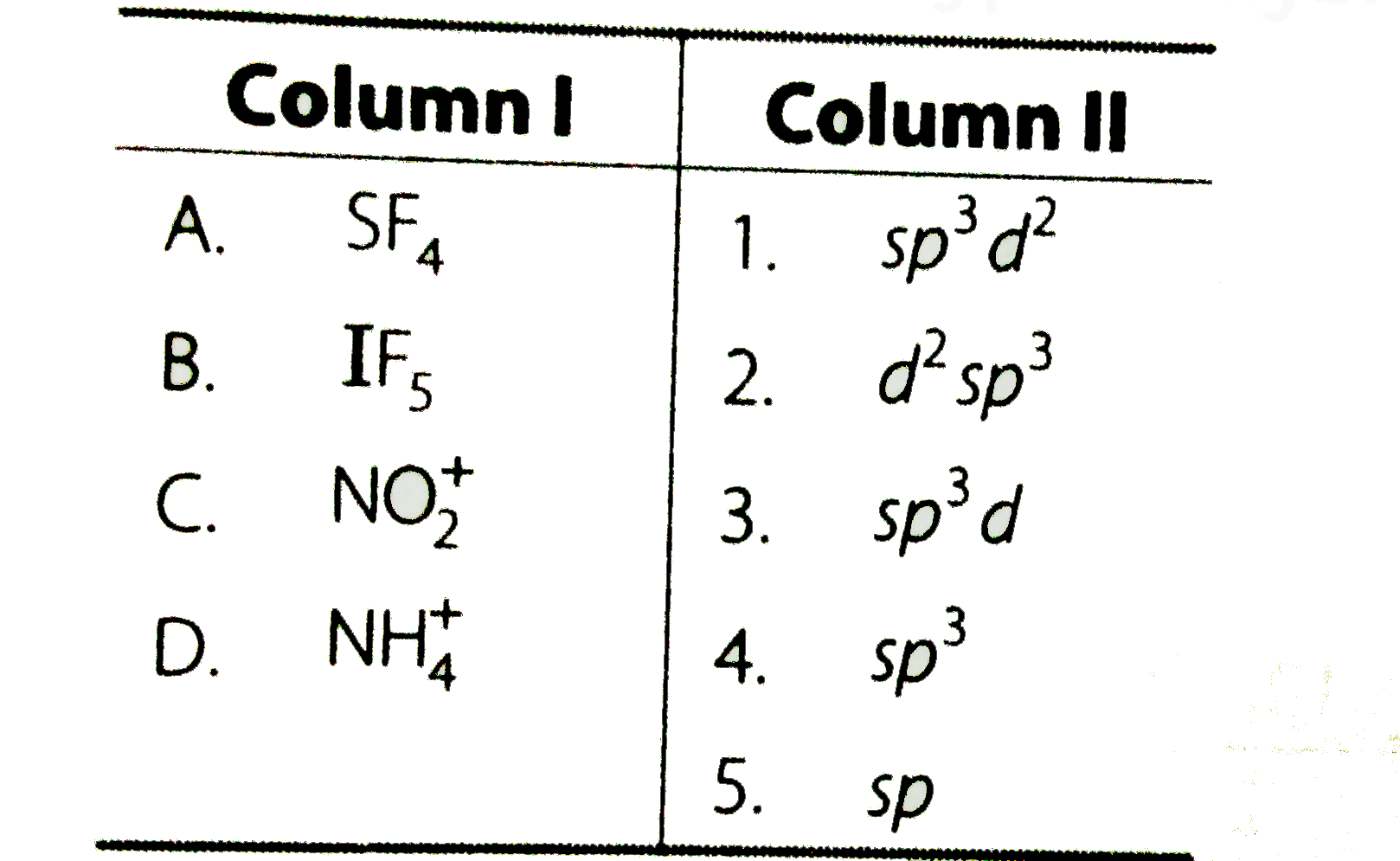Match the species in Column-I with the type of hybrid orbitals in Column-II :
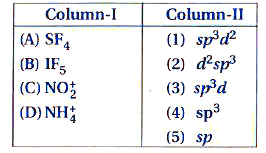
Text Solution
(A - 3) (B- 1) (C - 5) (D -4)
(A) SF4 = number of bp (4) + number of lp (1)
= sp3 d hybridization
(B) IF5 = number of bp (5) + number of lp (1)
= sp3d2 hybridization
(C) NO+2 = number of bp (2) + number of lp (0)
= sp hybridization
(D) NH+4= number of hp (4) + number of lp (0)
= sp3 hybridization
|
Topper's Solved these Questions
- CHEMICAL BONDING AND MOLECULAR STRUCTUREBOOK - KUMAR PRAKASHANCHAPTER - CHEMICAL BONDING AND MOLECULAR STRUCTUREEXERCISE - SECTION -D (SOLUTIONS OF NCERT EXEMPLAR PROBLEMS) (ASSERTION AND REASON)
3 Videos
- CHEMICAL BONDING AND MOLECULAR STRUCTUREBOOK - KUMAR PRAKASHANCHAPTER - CHEMICAL BONDING AND MOLECULAR STRUCTUREEXERCISE - SECTION -D (SOLUTIONS OF NCERT EXEMPLAR PROBLEMS) (LONG ANSWER TYPE QUESTIONS)
10 Videos
- CHEMICAL BONDING AND MOLECULAR STRUCTUREBOOK - KUMAR PRAKASHANCHAPTER - CHEMICAL BONDING AND MOLECULAR STRUCTUREEXERCISE - SECTION -D (SOLUTIONS OF NCERT EXEMPLAR PROBLEMS) (SHORT ANSWER TYPE QUESTIONS)
23 Videos
- CLASSIFICATION OF ELEMENTS AND PERIODICITY IN PROPERTIES BOOK - KUMAR PRAKASHANCHAPTER - CLASSIFICATION OF ELEMENTS AND PERIODICITY IN PROPERTIES EXERCISE - Section -D SOLUTIONS OF NCERT EXEMPLAR PROBLEMS (Long Answer Type Questions )
7 Videos
Similar Questions
Knowledge Check
Match the species in Column I with the bond order in Column II.
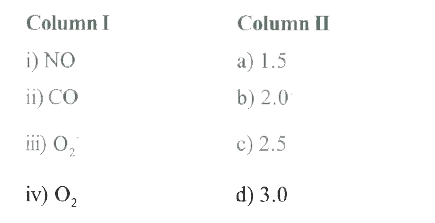 Ai-c,ii-d,iii-a,iv-bBi-a,ii-b,iii-c,iv-dCi-a,ii-b,iii-d,iv-cDi-a,ii-c,iii-e,iv-d
Ai-c,ii-d,iii-a,iv-bBi-a,ii-b,iii-c,iv-dCi-a,ii-b,iii-d,iv-cDi-a,ii-c,iii-e,iv-d
Match the shape of molecules in Column I with the type of hybridisation in Column II.
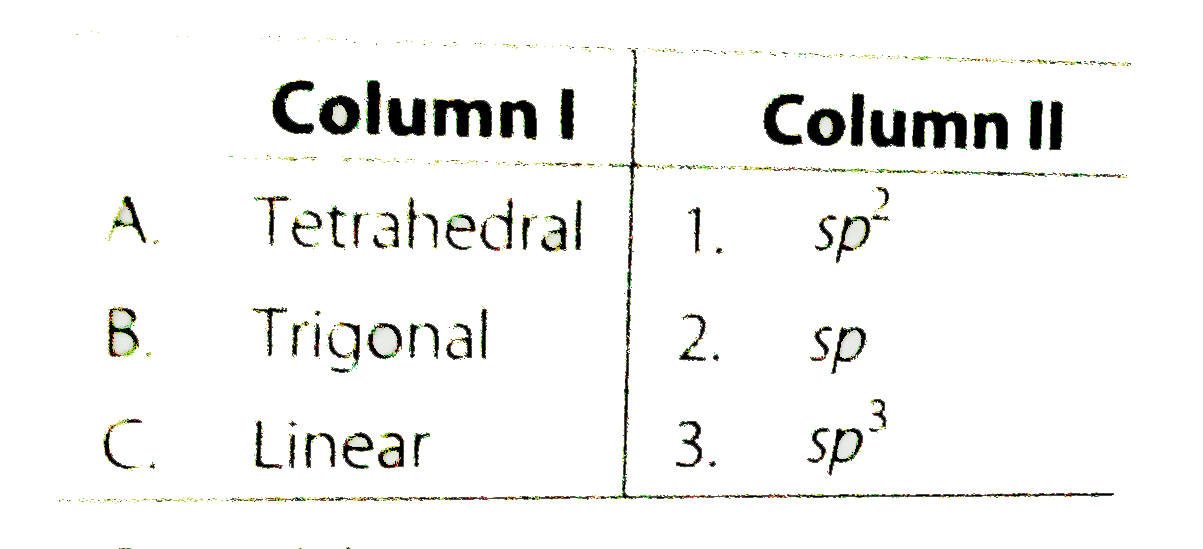
View SolutionMatch the species given in Column I with the hybridstion given in Column II.

View SolutionMatch the example given in Column I with the type of colloid given in Column II.
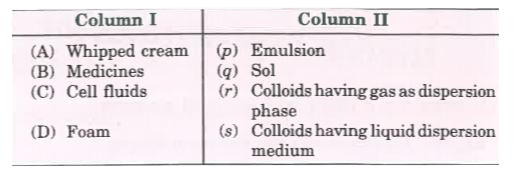
View SolutionMatch the species in Column I with the bond order in Column II.
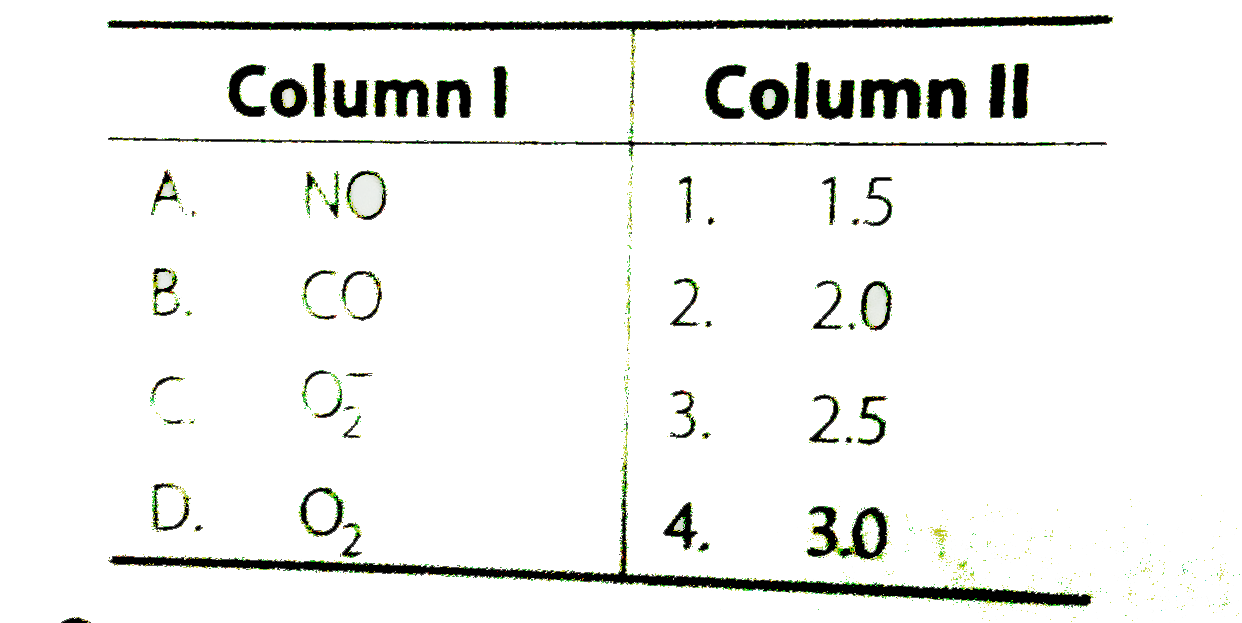
View SolutionMatch the species in Column I with the geometry/shape in Column II.

View SolutionMatch the species in Column I with the bond order in Column II.

View SolutionMatch the species in Column I with the geometry/shape in Column II.

View Solution

